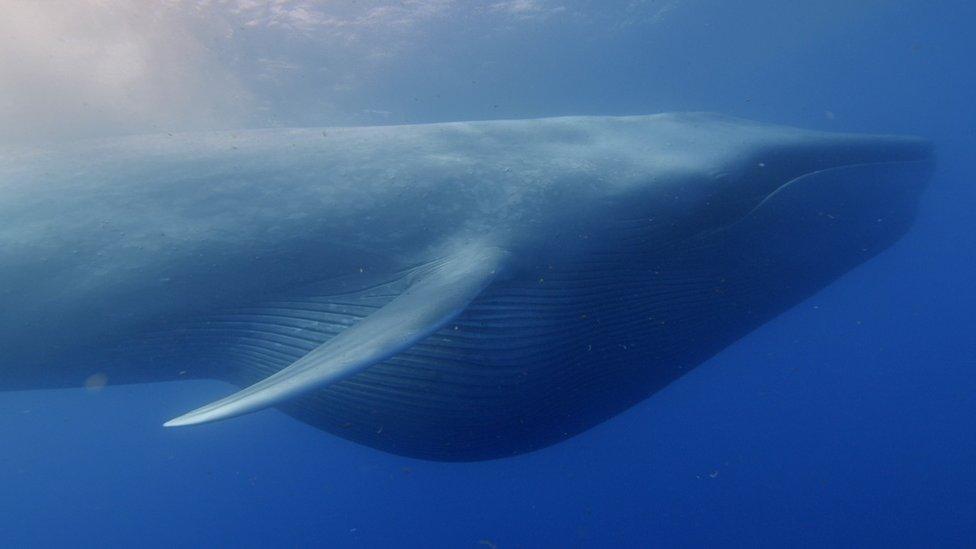How blue whales became so big
- Published

Blue whales are the largest animals on the planet, but have you ever wondered why they're so huge?
New research suggests that blue whales became so big because climate change caused them to eat large amounts in one go.
Scientists studied fossils from whales that lived more than 30 million years ago and compared them to whales today.
Their findings showed that, mostly, blue whales are much bigger than they used to be.
Blue whales can be more than 100 feet (30 metres) long - about the same length as three double-decker buses in a row!
The ocean giants feed entirely on tiny crustaceans called krill that live in all the world's oceans.
Millions of years ago, ice sheets covered the northern hemisphere.
This meant that krill could only be found at certain times of year and in certain places.
They bunched together in coastal areas where water from the new ice caps washed nutrients into the sea.
Blue whales feed on small crustaceans called krill
Researchers believe larger whales were at an advantage because they could make long journeys to reach the krill.
When they found them, the whales ate as much as they could in one go.
Over time, this caused them to grow to the size they are now.
Food and climate change aren't the only reasons why blue whales became so big.
Over 60 million years ago, it's thought a comet or asteroid wiped out many species.
This allowed ancestors of the blue whale to live without lots of predators.
Living in water also means there is less stress on their bodies and their large size helps them to stay warm.
- Published11 May 2021
- Published4 November 2015
- Published28 November 2012
